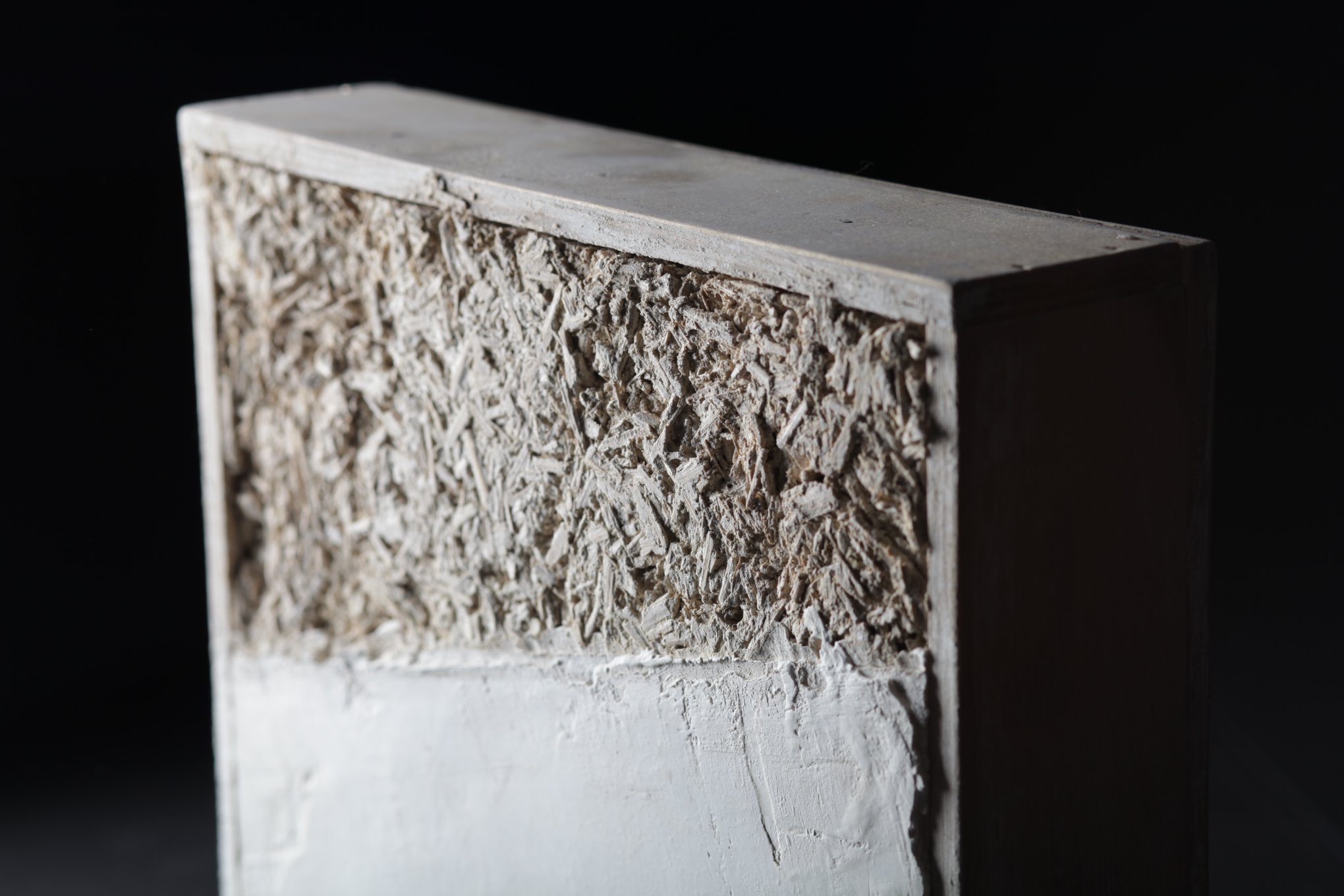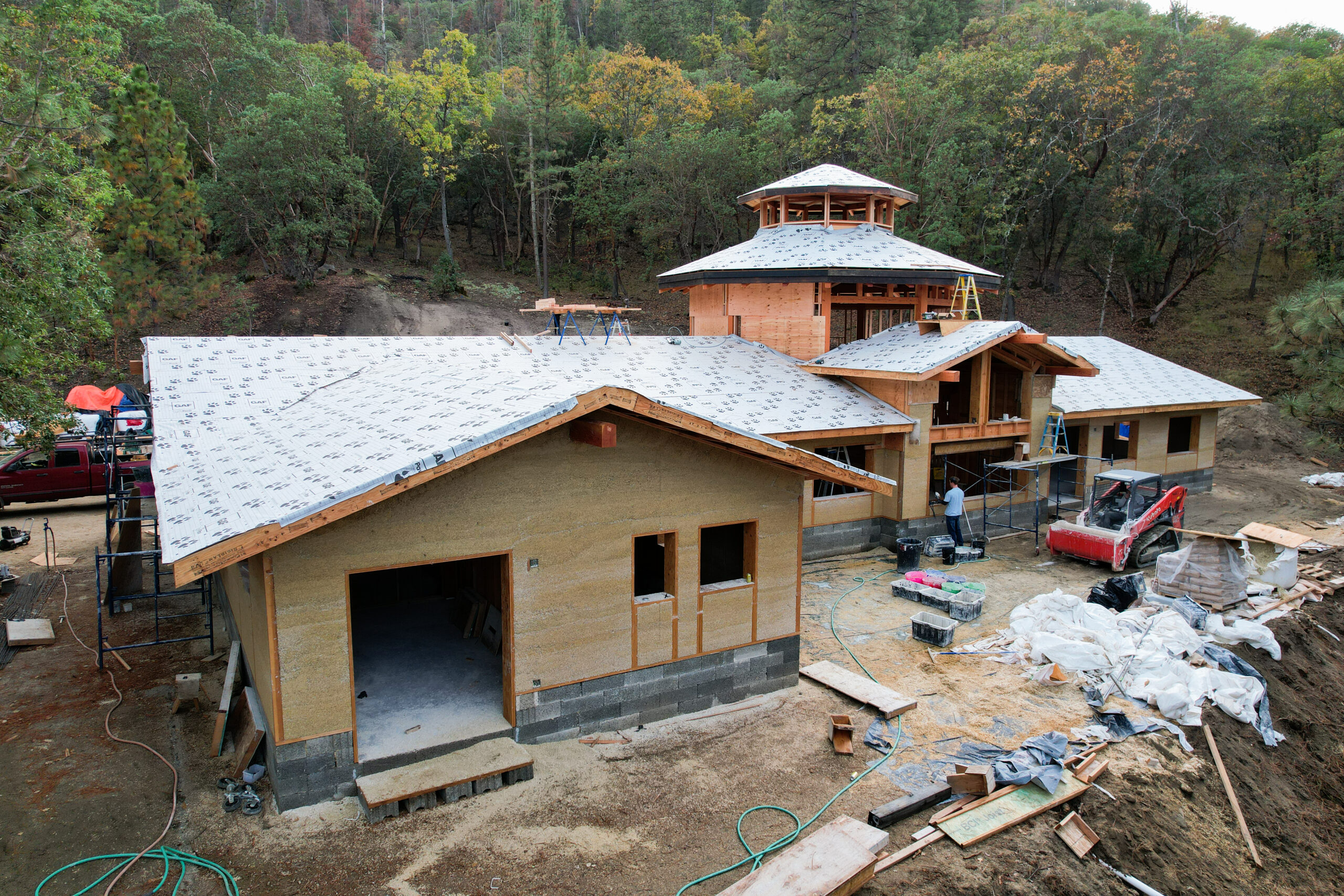By Robin Rogers, Solaripedia
Article originally appeared in Environmental Design + Construction magazine, April 2010
Beneath the veneer of many newly crafted homes and crusty old dwellings, hidden dangers often lurk, undetected, in the folds of our daily lives, including icky biological stuff such as mold and dust mites and scary chemicals like invisible radon gas, volatile organic compounds, and formaldehyde. Homeowners Bryan and Tricia Smith uncovered such villains after a remodeling project in their former Yakima, Wash., home. It prompted a voyage of discovery into the world of materials, systems, and diet — and the creation of a new home built “green” from the ground up.
Health Triggers
Six million households live with physical housing problems, according to the U.S. Department of Housing and Urban Development. Issues include allergens such as paint fumes, dust mites, mold, and formaldehyde. These offenders can trigger asthma attacks, respiratory illnesses or allergies in the 23 million asthma sufferers in America, according to the Centers for Disease Control and Prevention.
In addition, the U.S. Environmental Protection Agency (EPA) reports that indoor air can be more seriously polluted than outdoor air. Considering that most Americans spend 90 percent of their time indoors — and 60 percent of that time in homes — the risks to health may be greater indoors than outdoors. Children are particularly susceptible to housing‐related illnesses.
The Smith family of Selah, Wash., experienced these issues firsthand. After remodeling an older home, asthma and related problems emerged in their younger children. The issues motivated the parents, Tricia and Bryan, to conduct research. “It was like a snowball effect that seemed overwhelming at times,” Tricia Smith says. They discovered that a toxin-free home environment could help eliminate the triggers to respiratory problems. The prime causal suspects were various chemicals used in the remodel, especially the coating used to refurbish an old bathtub.
Consultations with a physician reinforced their resolve to create a healthier environment and amend their dietary routines using naturopathic principles as a guide. Bryan Smith admits that he was skeptical at first, but what he thought was anecdotal evidence produced marked improvements as they made diet and environment changes. “We started with a goal to provide a safe environment where the kids could thrive,” Bryan Smith says, “but hadn’t labeled it ’green’ yet.”
The Convergence
The Smiths tapped into a convergence of shared interests. Their builder and the local home-builders association were on a similar trajectory towards sustainable building.
Carly Faul, executive officer of the Central Washington Home Builders Association and head of the local green home building program, points out that it was only recently that research started revealing building material problems. This became more pronounced as homes were built tighter for less air infiltration. “Our builders wanted a way to address the problems and provide solutions,” she says. “So, about four years ago, we began adapting the National Association of Home Builders (NAHB) Green Home Building Guidelines to our locale, with a formal program launched in 2008. The program addresses all aspects of building homes.”
As part of the program development, the central Washington green home building program offered training for area builders, subcontractors, and suppliers, at the end of which an exam was required for certification into the national Green Advantage for Residential program.
Builder Steve Weise, of Steve Weise Co. Inc. had built environmentally friendly homes for years. He jumped on board early and attended the training to become certified. When the Smiths found Weise, they were attracted to his sustainability commitment. He not only helped the homeowners through the process of creating a sustainable home but also helped other builders and suppliers understand green building.
Building a Healthy Home
Working with the Steve Weise Co., the Smiths focused on indoor air quality, but they also wanted the project to achieve overall sustainability in its site development, energy and water use. Weise was a true advocate for their needs as he kept an eye on the end goal of building a healthier home while maneuvering through the competing interests of quality versus budget choices.
Sustainability consultant Brenda Nunes, of the Sustainability Foundation, played a key role in guiding materials selection. As the developer of a Built Green 5-Star level home in Roslyn, Wash., Nunes understood the challenges and opportunities as they related to green trends, choices, and budgets.
Sustainable Materials
Products selected conformed to ultra-low levels of volatile organic compounds (VOCs), including no-VOC paint, non-toxic floor finishes, and zero carpeting. These choices contribute to a safer, healthier, virtually odorless home. According to the EPA, VOCs are responsible for a new home “smell” and can trigger many adverse health symptoms, including asthma and cancer, so the Smiths wanted to eliminate odors.
Another common health trigger is urea-formaldehyde, a carcinogen typically found in the glues that hold together pressed wood products and fiberglass insulation. Weise installed alternatives such as formaldehyde-free insulation, plywood, cabinetry, subflooring and roof sheathing.
Locally available sustainable and health-focused materials such as salvaged wood flooring were also used. These hard surfaces don’t harbor dust, dirt, and mites the way carpeting does, and they are finished with low-VOC coatings. They are easily cleaned with the central vacuum system and soap-and-water solutions.
Other durable materials that are easy to maintain without toxic chemicals were included such as recycled-content tile, concrete countertops, 50-year siding, and 50-year roofing. The cork flooring upstairs is made from the harvested bark of cork oak trees that naturally renews every nine years — without killing the tree.
Energy Efficiency
To accommodate the extreme temperature fluctuations in the Yakima area, the home has a tight, well-insulated building envelope to keep it cooler in summer and warmer in winter. The foundation is insulated concrete forms (ICF) made with reinforced concrete sandwiched between two layers of expanded styrene foam insulation. Designed to qualify as an ENERGY STAR home, the house includes ENERGY STAR-rated appliances and lighting fixtures that are low voltage or compact fluorescents. A duct system performance test ensured that any air leaks were detected and fixed. A solar collector heats the water for both domestic uses and the floor heating system.
Heating and Ventilation
A radiant floor heating system — first used by the Romans — can operate at a lower ambient temperature that is perceived as warmer because it’s located where people inhabit spaces. Because a radiant floor heating system has no ducts, dust is not blown around the house as it is with many forced-air systems. A whole-house heat recovery ventilation (HRV) and the high-quality electronic filtering systems use separate blowers to move incoming fresh and outgoing stale air without mixing the airstreams, which improves indoor air while maintaining energy efficiency.
Water
With annual area rainfall of approximately eight inches, drought-tolerant landscaping was used. Although still young, it features plants adapted to low precipitation. Pervious pavers in the driveway allow stormwater to infiltrate directly into the soil. Conserving water indoors is achieved with dual-flush toilets and low-flow showerheads and faucets.
The Dénouement
With a focus on healthy products and overall sustainability, the Healthy Home will certify to the Northwest ENERGY STAR Homes program for energy efficiency and qualifies for the EPA’s Indoor AirPLUS program for indoor air quality.
Perhaps the most rewarding aspect of the project is that by implementing new Healthy Home principles, as well as a diet of appropriate foods and probiotics, the Smith kids are now medication-free and living in a healthy environment. “We have peace of mind that all of the materials we used to build our home are safe,” Tricia Smith says. “That peace of mind has translated into a higher quality of life.”
Builder’s Advice to Other Builders
When building this type of toxin-free environment, Steve Weise says he found three basic practices to be most important in constructing a “healthy” home.
First, instead of OSB (oriented strand board), he installed plywood, which comprises a large percentage of the materials chain and so has a major impact on potential exposure to toxins. Even though plywood contains glues that can off-gas, the five-layer composition requires less than OSB; plus, the exterior-grade plywood Weise uses is considered safe, containing phenol-formaldehyde rather than its toxic cousin urea-formaldehyde. This was also part of the bigger picture of paying attention to the “guts” of the house and how products fit together to reduce or eliminate off-gassing from everything that was installed.
Second, Weise focused on educating all subcontractors to create an awareness of health for the family that would eventually inhabit the home. He says that personalizing the issue helped the team stay on target to create an environment that does not contain or bring in particulates and other offenders.
Finally, he made sure that the fresh air ventilation system, along with an HRV (heat recovery ventilator), would eliminate any toxins that might find their way into the structure. He brought in the HVAC contractor early so that they could work together for optimizing the system that Weise believes is integral to maintaining a healthier home. For more information, visit Steve Weise Company.
About the Author: Robin Rogers, LEED AP, GACP, is an architectural designer currently designing the sustainable, solar community Rocky Top Living with builder Steve Weise near Yakima, Wash. Her website Solaripedia is devoted to providing free green building and green architecture information. For more information on the Smith’s home, visit the Healthy Home Website.
Author’s Acknowledgment: Cheryl Isen, president of Isen and Co., also contributed to this article.


